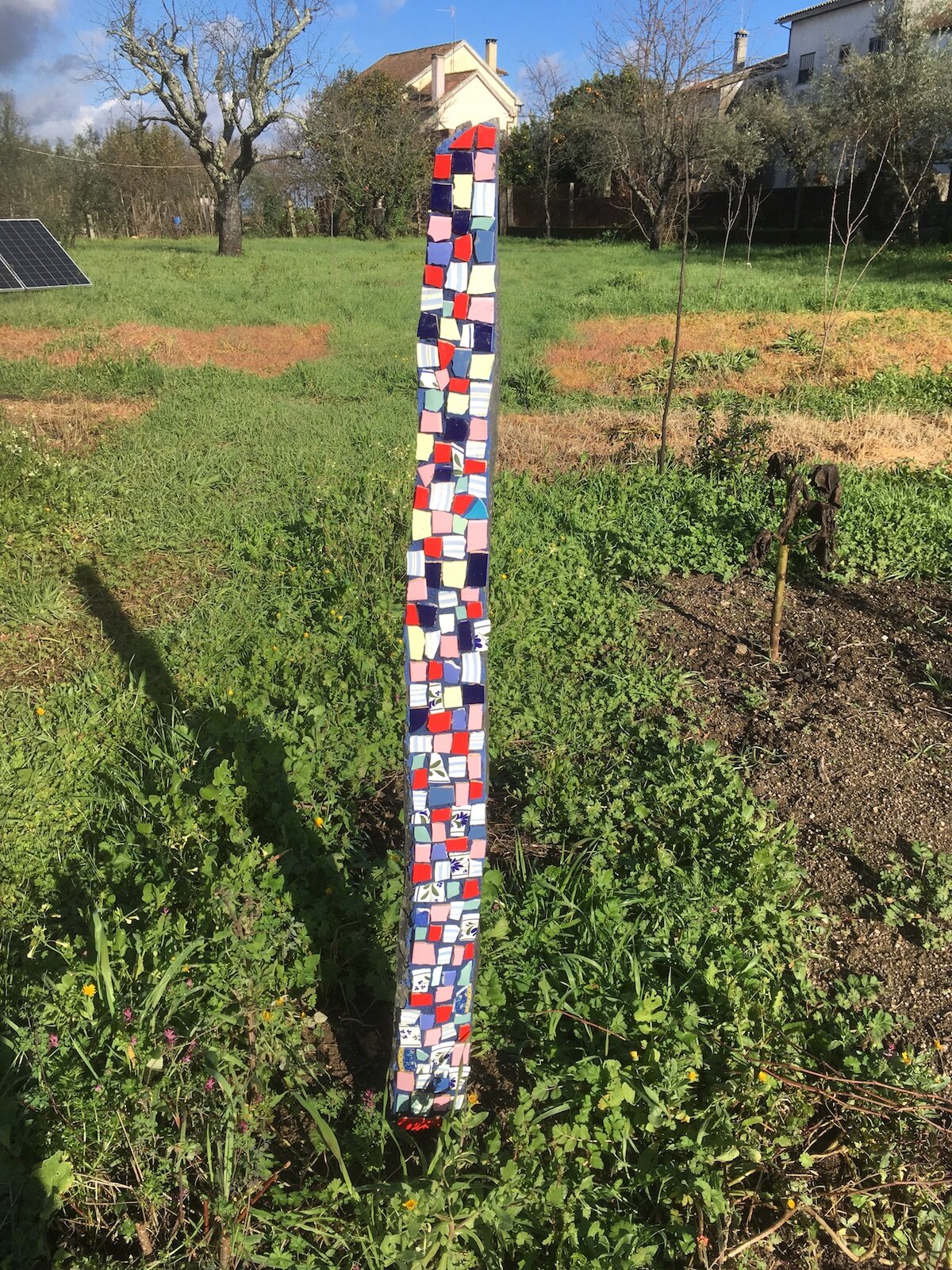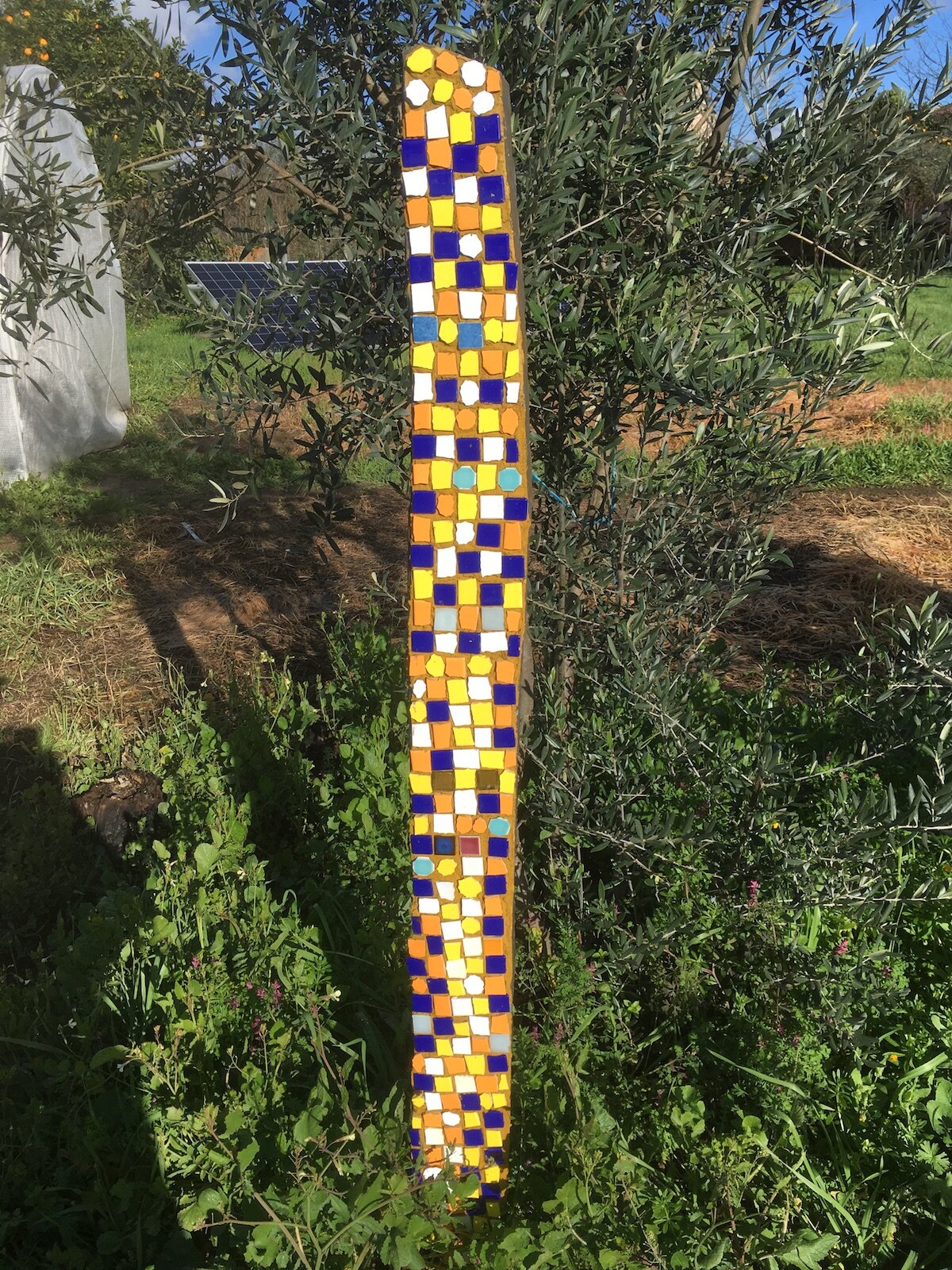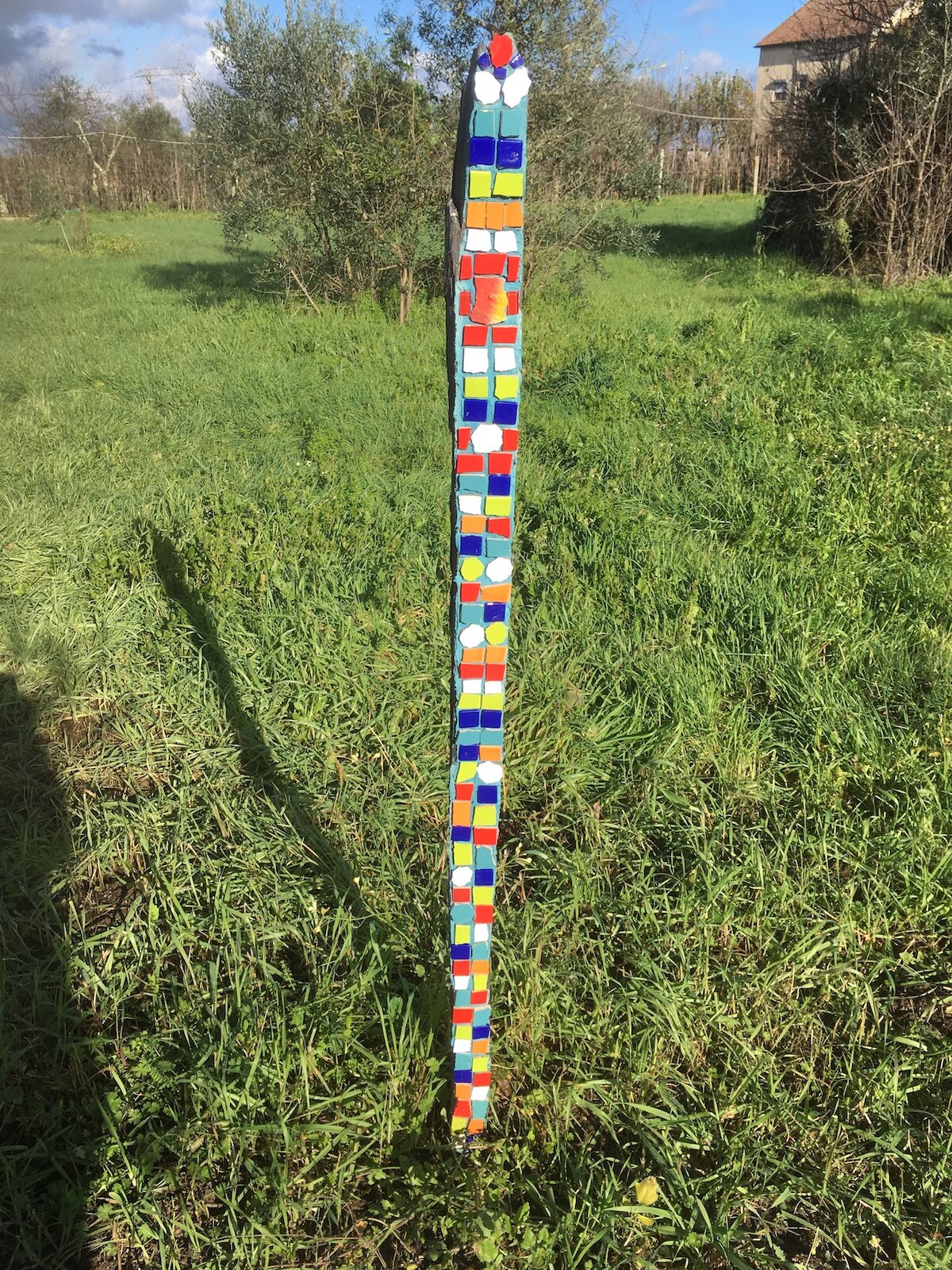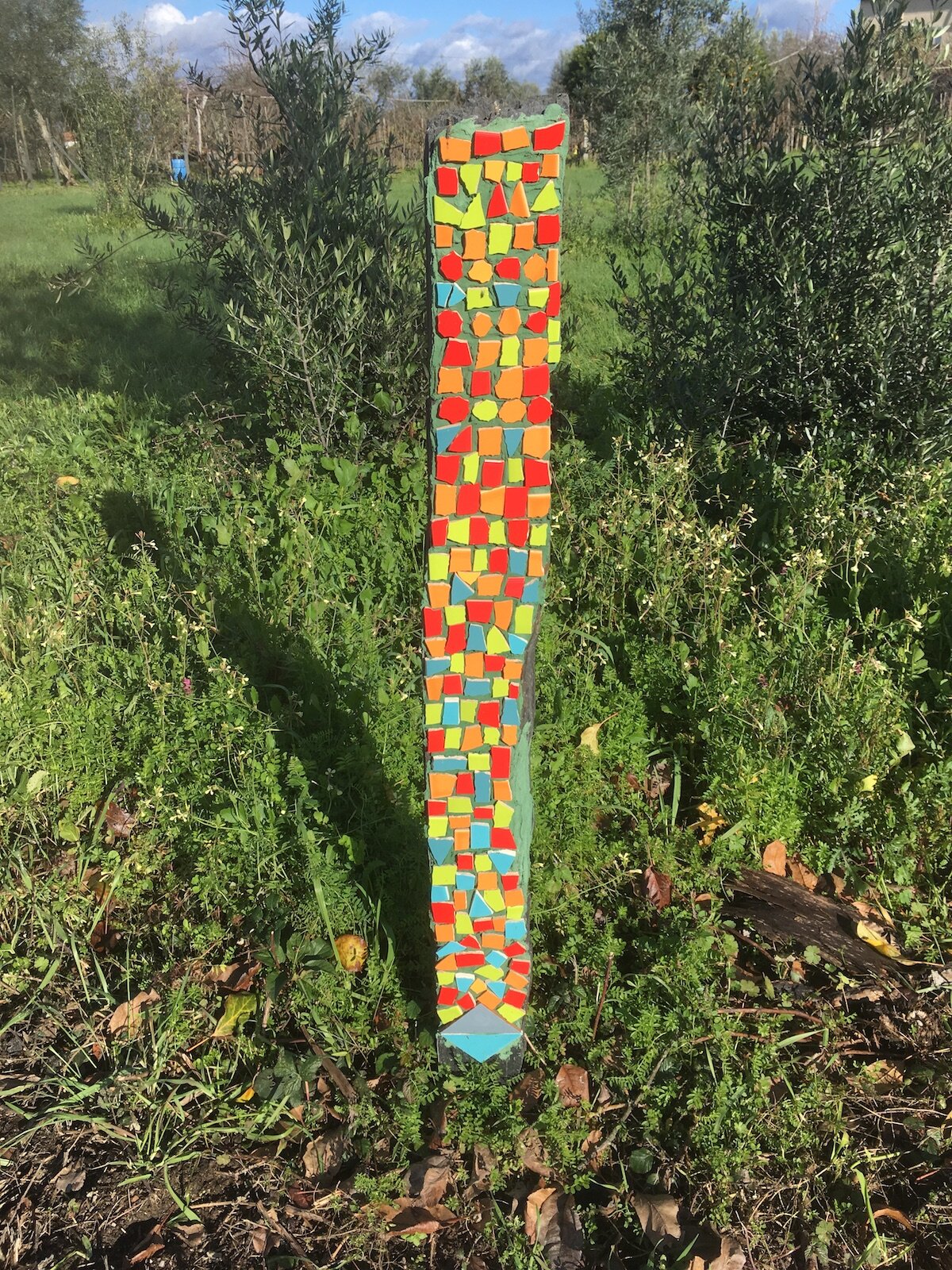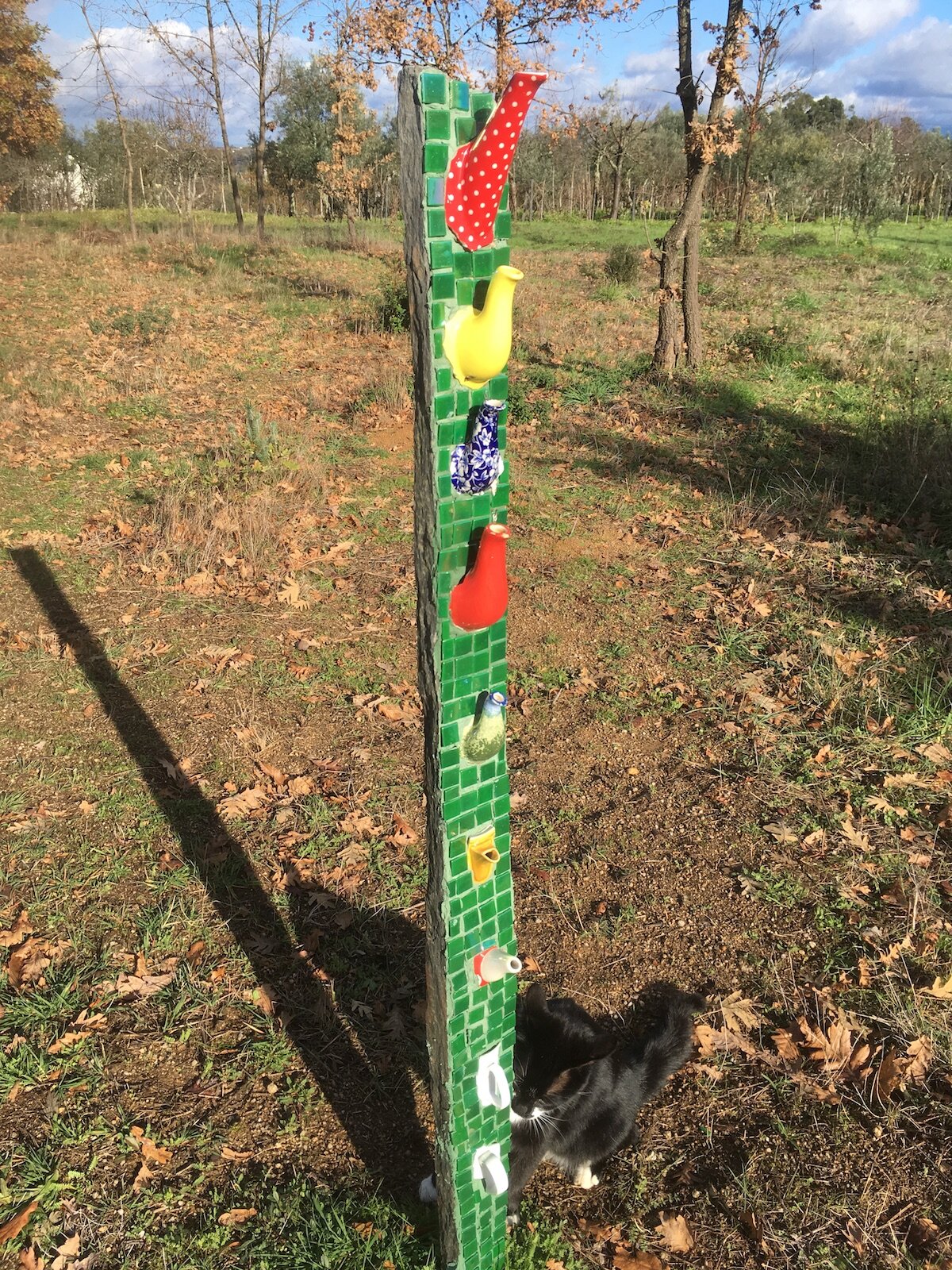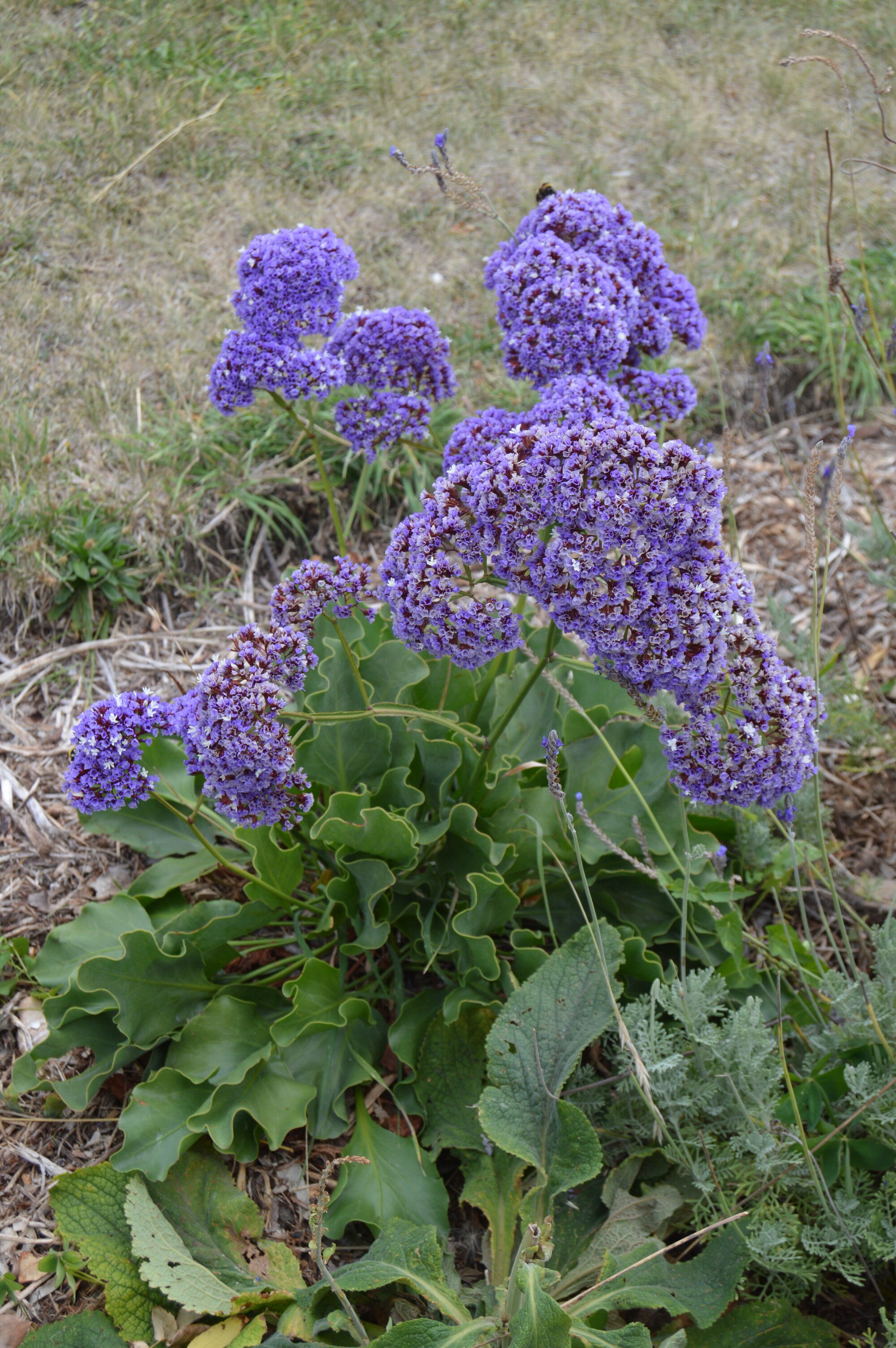Yes, it's ages since I have done a blog posting. As you most of you may have guessed, it's because I have been so tied with the online adventure of Garden Masterclass. I've been working on a book about contemporary Dutch garden design too. Anyway, desk now partially cleared, and time to work on an update to our new Portuguese garden venture, it being a year since we got started here in central Portugal (near Oliveira do Hospital, or as I keep on exlaining: two-thirds of the way up and halfway across).
I should start out by explaining what I am trying to achieve: a minimal irrigation garden which is ornamental and supportive of local biodiversity. So, I'll firstly outline the space, then the plant groups I'm trying to work with, then do a report-back of how the first year has gone, its successes and failures.
Our more intensively cultivated space is a rectangle defined by the house, a retaining wall backing onto a road, the ruin next door (gutted in the fire of October 2017) and an elderly orchard. This had a number of narrow beds, defined by low walls of cubos (granite cubes, traditionally used as cobbles) which we have extended, so it is a bit like a monastery garden (we sometimes call it that). This is to be more intensively cultivated (although not irrigated, apart from to establish). Here there are some old camellias, roses and a few other left-overs from the previous owners, who I think had quite an interesting garden by local standards). Its a nice sheltered space to pack in all the things we want to try out, and give some attention to while they establish. Beyond this is about three quarters of a hectare of olive grove, orchard and an area that was until about 20 years ago, used from growing vines: it’s fertile with lots of annual grasses and vetches. Beyond this is a strip of thinner soil, a far more interesting flora (a wide range of annuals and perennials, some Cistus salvifolius) and some Cytisus, the latter to be eliminated as it smothers everything else, seeds madly and burns badly).
The plants:
Mediterranean natives. A rich flora, of which only a tiny amount is in commercial cultivation. How far can we go before mentioning Olivier Filippi? Not very far. Except that it is worth pointing out that he has his biases; in discussing his plant range with Alejandro O'Neill, I realise he has a strong focus on the hummocky sub-shrubs, indeed the dominant 'classic' Mediterranean plant shape; and not so hot on grasses or perennials. The big advantage of the sub-shrubs is a 365 day a year presence, their disadvantage that many are short-lived, impossible to hard prune and many are highly flammable. Herbaceous perennials and grasses however will have a long 'off season'. I’m going to go for plenty of both.
My plan is to build up as much structure and plant mass as I can with a limited range of evergreen natives: Arbutus unedo, Pistacio lentiscus, Bupleurum fruticosum, Myrtus communis – all of these are longer-lived, or resprout from the base if cut hard back, and are not especially flammable. And local grass Stipa gigantea, which is evergreen and when seen en masse (there are almost meadows of it near here) quite spectacular. I'm hoping good things from another big grass with a similar habit- Ampelodesmos mauritanicus.
I've started off quite a few of these with plants grown in alveolas florestais (landscape plugs to Americans, ?? to Brits, - +/- 18cm long, 5cm wide), from Sigmetum (an amazingly good native plant supplier in Lisbon). The myrtles I watered every 3 weeks during the summer, the rest had no water at all. 99% survival rate, and good growth.
The plants I got from Olivier Filippi are quite incredible, they had no water at all and have survived and started to grow again well this autumn. The deep pots they are grown in clearly point their roots in the right direction, and they are well-established plants too. Most impressively, I also got some smaller ground cover things in P9s too, which have also done very well, again with no watering. Achillea nobilis indeed spread to nearly a metre across, and was actively doing so well into August – so that has now been pulled out, divided and being trialled as a lawn substitute over about ten square metres.
As an aside, last summer we had 3 months with minimal rain and temperatures in the 30s for several weeks. The soil here is deep, but derived from granite, so very light, with minimal organic matter or clay, so water drains and disperses very quickly.
Jo is busy doing mosaics on these slate pillars, of which there are a great many around - they were used a posts for supporting wires for vines in the past.
Pelargonium. Widely grown of course but with a bias to perpetually flowering types, and although they clearly grow well in the ground, almost universally grown as container plants, presumably so that they can be watered and kept flowering. What interests me is that most appear to be reliably very long-lived plants (that ability to shoot from the base, which marks the true shrub), and that as well as the 'common or garden centre' cultivars there are a great many species, robust old hybrids (often quite difficult to source) and less showy classifications (like the 'Angels' or the scented-leaf varieties) which I think have great potential to be garden plants in this climate. The ease with which they can be propagated tempts me to think of mass planting in the future, alongside native sub-shrubs and grasses. They seem quite drought-tolerant too, so long as you are prepared to accept 'summer shut-down', with no flowers and leaf loss; however revival after mid-September rains was spectacular. Frost-hardiness may vary greatly though - we’ll just have to see.
Salvia. There are a lot of dry habitat species, but they are not so easy to source, and most of the garden world's interest has been in the very colourful central and southern American species. Most of the Mexican origin ones come from summer rainfall climates, but nevertheless I thought I should try some, as Salvia 'Hot Lips' and a few other of the greggii/microphylla species complex can be seen in people's gardens here, sometimes to quite large sizes. Otherwise the global salvia craze is yet to make much of an impact in Portugal. My first summer experience with some cultivars from this small quite shrubby group has been very good – virtually no water, and flowering all summer. The more lushly leafy types have been less happy: S. guarantica did not survive and 'Amistad' only just, although it may well do much better in year two. Some of these may do much better in shade than in full sun. So, I'm propagating them and will try more this coming year.
More generally, summer survival was mostly good, with just enough watering to keep new plants alive, not in growth, nor looking good – an important distinction. Given the massive size of camellias in the village, once relatively moderate water demand plants are established, there is clearly no need for irrigation once plants have established root systems.
The big experiment was to plant out some 700 25mm plugs of seed-grown dry summer climate perennials, as an intermingled 'mixed planting' in three places: 1) a bed in the 'monastery garden' mentioned and two places out in the olive grove, 2) on reasonably good-looking soil, and 3) on noticeably grittier soil, but which still had a vigorous grass flora beforehand. My reasoning was to copy what happens in this climate: autumn germination, slow growth in the winter, speed up in spring, summer dormancy. No irrigation.
The results have been disappointing: very high losses for 1 and 3 (80%), but quite good (80% survival) for 2. The one that really thrived (and flowered) was Limonium perezii, but that has now begun to succumb to frost. Eriogonum fasciculatum has been fine too with no losses and small seed grown Stipa gigantea have all survived too. Of the rest, survival was almost equally poor amongst them: Centranthus coccinea, Festuca mairei, Goniolemon tataricum, Lychnis chalcedonica, Marrubium incanum, Origanum vulgare, Papaver orientale, Penstemon barbatus. However odd plants scattered around the more established and slightly shaded part of the monastery garden did much better, especially Gaura lindhemii, and Marrubium incanum. I would do the same again, but with very occasional deep irrigation. I am also sure that the survivors will be ok for summer number two.
The lesson perhaps is that for summer drought-induced dormancy to really work plants have to be a certain minimum size? Shade, albeit minimum, may also be an important survival factor. Which is why the early succession plants characteristic of the Mediterranean (lavender, cistus and the much cursed - because weedy, aggressive and inflammable, brooms/Cytisus etc.) have an important role to play, shading slow-growing perennials and woody plants. It might even be worth planting out plugs and covering them with shade netting for summer.
What has worked was a more targeted occasional irrigation of young plants (an odd assortment of Pelargonium, Salvia and various others) put in in July, in the middle of the hottest weather. This wasn't really intentional, but I just didn't want them hanging around in pots any more. What made the difference was planting them all in a shallow depression (as recommended locally and by Olivier), so that when you water them they get a lot and it soaks down where it is needed. I tried to do this on an 'as-needed' rather than routine basis: more or less weekly to begin with but by the end of August I more or less gave up, as they were all growing so well; they have all done very well in the autumn growth period.
Limonium perezii - wonderfully drought tolerant but is it hardy?
What has worked was a more targeted occasional irrigation of young plants (an odd assortment of Pelargonium, Salvia and various others) put in in July, in the middle of the hottest weather. This wasn't really intentional, but I just didn't want them hanging around in pots any more. What made the difference was planting them all in a shallow depression (as recommended locally and by Olivier), so that when you water them they get a lot and it soaks down where it is needed. I tried to do this on an 'as-needed' rather than routine basis: more or less weekly to begin with but by the end of August I more or less gave up, as they were all growing so well; they have all done very well in the autumn growth period.
So, what next? Filling out the monastery garden with more young seed-grown plants, using the shallow depression technique, and I think getting a nursery bed ready. Next summer we hopefully will have a pump operational for our well, so that we can do occasional irrigation more easily. So I think I'll try growing plants on in an occasionally irrigated bed to ensure survival for one summer and then digging up and moving to final positions in the autumn, so that they will be considerably larger when they face their first un-irrigated summer. This will be practicable because the soil is so light that digging up and planting is very easily done.
A big learning curve, but enough has gone well to encourage lots more experimentation. Thanks to volunteers Hana Vanova and Josh Bennett for joining us and helping us, to Harald Milot who helps us one day a week, and we look forward to more progress next year.

